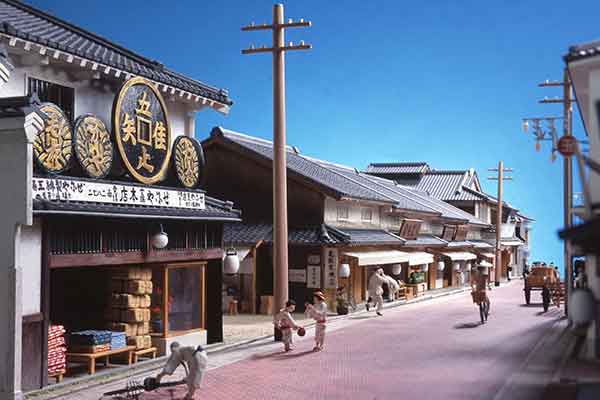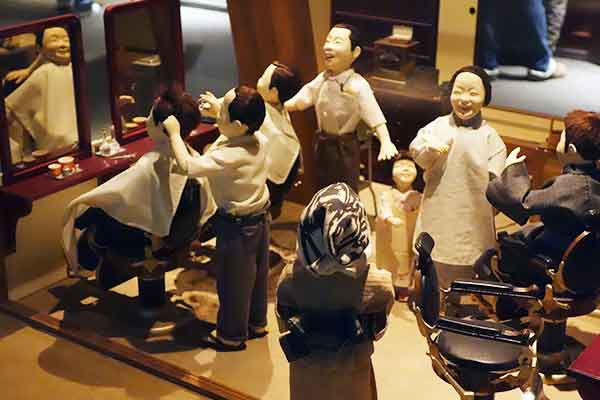Osaka Museum of Housing and Living 8th floor
Modern Osaka Floor "See and feel Osaka"
4. Karahori dori: Houses, Alleys, and Shops (1938)
A faithful reproduction of this shopping district in the late 1930’s.
This model depicts a day on which the Jizo-bon Festival was held. [Scale 1/50]
Living Space Theatre “From One Home to Another”
A Tale of One Family’s Movement” The story of Etsuko’s many living spaces.
Born and raised in the Karahori Shopping District, she took temporary shelter in a bus village after the War, and finally moved to the Furuichi Housing Development.
Karahori-dori is a vibrant shopping district stretching around 1km east from Matsuyamachi-suji.
Urban development in this district began in the 18th century.
The main street of Karahori was lined with Merchants and became a lively shopping district during the Meiji period.
Also known for its backstreet alleys and row houses, it appears in the Kamigata rakugo (comical Osaka-style storytelling) called Rakuda.
While at first glance it may look like the Edo period townscape has been left intact, backstreet wells are replaced by city water and drain basins are visible.
Pre-World War 2 townscape still exists in the form of street lights, two-storey Machiya townhouses with protruding cornice decorations designed to support the eaves, and buildings with white tile exteriors and parallel slats called louvre covering the doors and windows.
Many of the new buildings are modern row houses, providing a distinctly Osaka feel.
